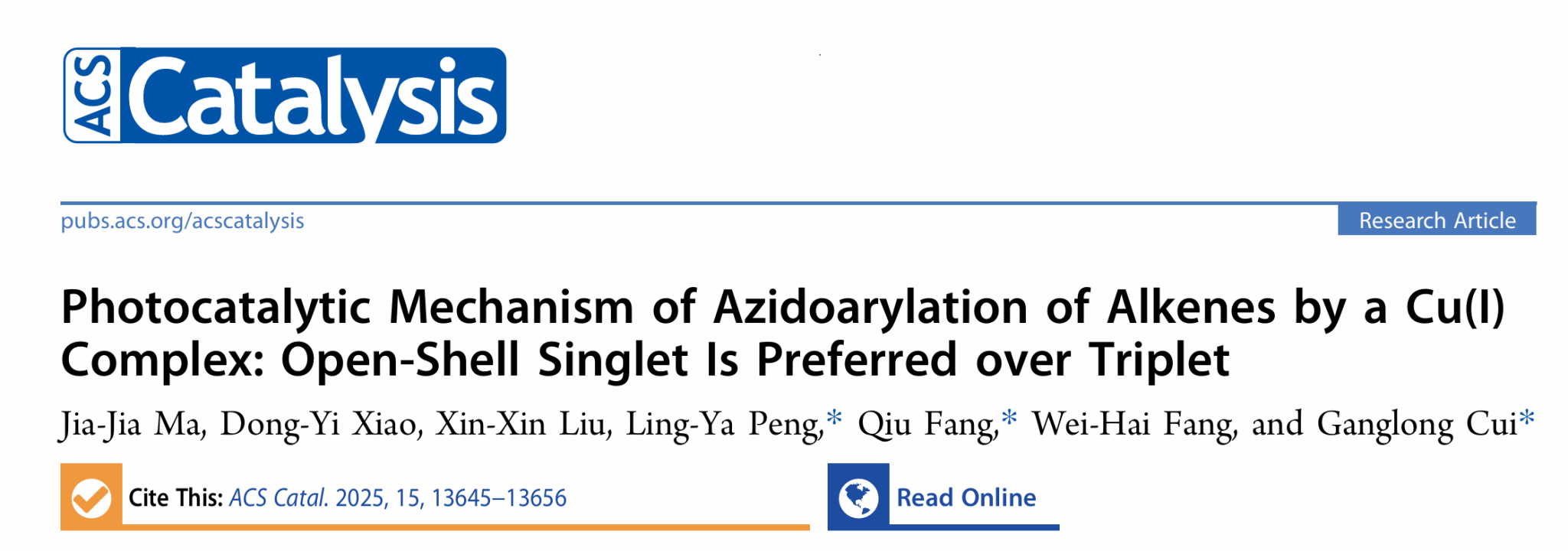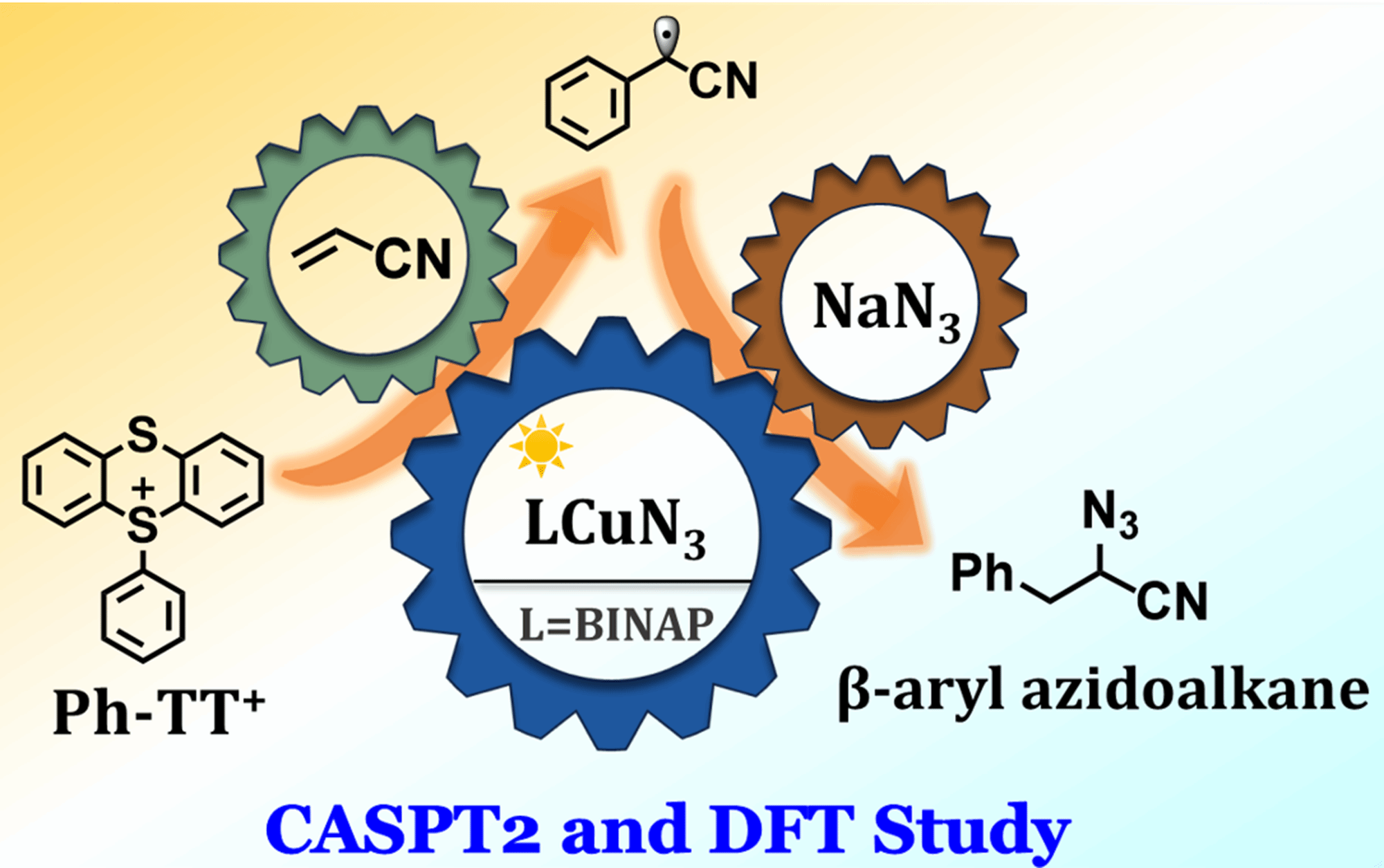
Jia-Jia Ma, Dong-Yi Xiao, Xin-Xin Liu, Ling-Ya Peng*, Qiu Fang*, Wei-Hai Fang, and Ganglong Cui*. ACS. Catal. 2025, 15, 13645-13656. DOI: https://pubs.acs.org/doi/10.1021/acscatal.5c02258.

The photoinduced Cu(I)-catalyzed reaction has drawn significant attention and has been successfully applied to the azidoarylation of alkenes. However, the underlying reaction mechanism remains elusive. In this study, we employ the complete active space second-order perturbation theory (CASPT2) and density functional theory (DFT) calculations as well as ab initio molecular dynamics (AIMD) simulations to study the mechanism of azidoarylation of alkenes via arylthianthrenium salt. The reaction initiates with the formation of a [CuI(N3)] complex. Upon photoexcitation and after a series of photophysical processes, the lowest triplet state of [CuI(N3)] is eventually populated. Subsequently, an additional azide ligand coordinates to the Cu center, triggering a single-electron transfer process with the arylthianthrenium salt. This step leads to the formation of [CuII(N3)2] and a homobenzyl radical. The radical carboazidation reaction then completes the catalytic cycle, yielding a β-aryl azidoalkane product. Notably, the radical carboazidation reaction prefers to occur in the open-shell singlet state rather than the triplet state. The rate-determining step is identified as the electrophilic attack of the homobenzyl radical on the internal N atom instead of the external N atom in the azido group of [CuII(N3)2], which is governed by the steric effects. And nonradiative processes play a vital role in the reaction. Furthermore, investigations into substituent effects on alkenes reveal that the -CF3 substitution demonstrates superior reaction performance and enantioselectivity.
First Author: Ma Jiajia, PhD candidate, Beijing Normal University
Correspondence Authors: Prof. Cui Ganglong and A/Prof. Fang Qiu, Beijing Normal University; Dr. Peng Lingya, Shaanxi Normal University
Full Text Link: https://pubs.acs.org/doi/10.1021/acscatal.5c02258